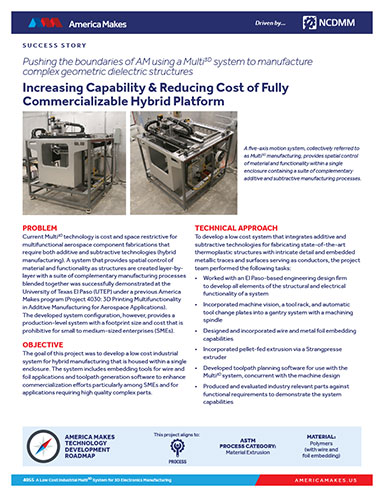
September 16, 2019
PROBLEM
Current Multi3D technology is cost and space restrictive for multifunctional aerospace component fabrications that require both additive and subtractive technologies (hybrid manufacturing).
A system that provides spatial control of material and functionality as structures are created layer-bylayer with a suite of complementary manufacturing processes blended together was successfully demonstrated at the University of Texas El Paso (UTEP) under a previous America Makes program (Project 4030: 3D Printing Multifunctionality in Additive Manufacturing for Aerospace Applications).
The developed system configuration, however, provides a production-level system with a footprint size and cost that is prohibitive for small to medium-sized enterprises (SMEs).
OBJECTIVE
The goal of this project was to develop a low cost industrial system for hybrid manufacturing that is housed within a single enclosure.
The system includes embedding tools for wire and foil applications and toolpath generation software to enhance commercialization efforts particularly among SMEs and for applications requiring high quality complex parts.
Fill out the information below to download the resource.
Latest News






